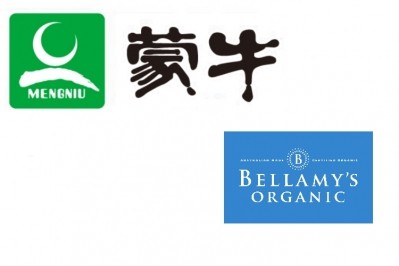China Focus: Consumer trends, gin challenges, e-commerce opportunities and more feature in our round-up

No compromise on taste: ‘Conscious indulgence’ trend observed in Chinese consumers
‘Conscious indulgence’, a trend that shows consumers actively reading food and drinks’ labels is widespread in China.
This is according to FrieslandCampina Ingredients first 2019-2020 report on the global trends in the F&B industry.
Speaking to FoodNavigator-Asia, Anneke van de Geijn, the global marketing director Food & Beverages at FrieslandCampina Ingredients said consumers were becoming increasingly aware of what is inside their food and drinks.
She said this had to do with the readily available information on devices and apps.
Craft spirits challenge: Chinese regulations confusing botanicals in gin for traditional Chinese medicines
Aside from all the usual red tape importers face in getting consignments of spirits into China, one botanical barrier is reserved mostly for gin.
A lengthy list defines China’s acceptance of the herbal ingredients that give a gin its flavour. Some of these botanicals can be proscribed due to their role in traditional Chinese medicine, according to Hannah Keirl, managing director of Spirits Box, a craft spirits importer based in Shanghai.
“It’s very black and white. There are no grey areas,” she said.
“For example, angelica root is technically not allowed in China. You have this red book that tells you which botanicals are not allowed be added to a spirit, and if your product contains those, then it’s an automatic no.”
Vietnam-China trade at risk? Severe declines and confusing regulation changes threaten fresh food trade
A severe drop in Vietnamese fruit and vegetable exports to China in addition to recent confusing regulatory changes could be signs of a major threat to the fresh foods trade between the two countries.
According to data from Vietnam Customs, the export value of Vietnamese fruits and vegetables into China saw a 44.2% year-on-year drop to hit US$144.2mn in July 2019, whereas the total exports to China for the first half of 2019 were down 8.1% overall at US$1.6bn.
China is the country’s top fruit and vegetable export destination, taking some 70% of fresh exports, according to GlobeMarketNews.
This severe drop was attributed to US-China trade tensions affecting funding and commerce, as well as China’s tightening of regulations surrounding fruit imports, including requirements for phytosanitary certificates, further proof of origin and more.
‘Gargantuan’ potential: Alibaba’s research arm on China’s three massive food and beverage e-commerce opportunities
China’s massive e-commerce market potential due to its ‘opening-up’ policies, gargantuan market and rapid digital transformation are opportunities that all global F&B firms should make the most of, according to an industry expert.
Hailing from the Alibaba market research arm, Alibaba Research Institute Executive Senior Expert and Ali Cross-border E-commerce Research Centre Director Ouyang Cheng said that China’s ‘three great opportunities for the world’ were not to be missed.
“China is now opening up its trade with Shanghai as the trade centre, not to mention its gargantuan market due to the large population and the ongoing digital transformation and advancements in the country,” he said at the Nutraceutical Industry Development Conference held in conjunction with the Fi Asia China 2019 show in Shanghai.
The inside scoop on ice cream: Chinese consumers want both indulgence and health
The ice cream market in China is growing rapidly, with brands tapping into this trend from both an indulgence and health perspective.
According to market research provider Euromonitor International, sales revenue of ice cream in China is expected to reach RMB45 billion (US$6.5b) this year.
Meanwhile fellow research agency Mintel predicts the market to grow at a CAGR of 11.9% to reach RMB71 billion (US$10b) over the next five years.
Mintel’s China Reports associate food and drink analyst, Belle Wang said: “Today’s consumers no longer see ice cream as only a summer treat, but as a dessert or snack that can be eaten all year long.











